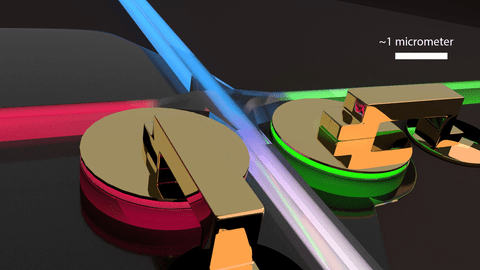
A research team from NIST, UMD and ETH-Zurich has created a tiny, energy-efficient light switch which could enable programmable circuits for light, similar to those for electrical currents. The results are promising for developing on-chip integrated optical networks that can be switched by CMOS-level voltages. Relying on particles of light — photons — to transport data within a computer offers several advantages over electronic communications. Photons travel faster than electrons and don’t waste energy by heating up the computer components.
Scientists had once thought that a plasmonic system would greatly attenuate light signals because photons would penetrate the interior of the gold membrane, where electrons would absorb much of the light energy. But the researchers have now proved that assumption wrong.
The compactness of the device and a design that ensured that few photons would penetrate the membrane resulted in a loss of just 2.5% of the light signal, compared with 60% with previous switches. That puts the switch, although still a prototype, within reach of commercial applications especially autonomous vehicle sensors.
For more details visit NIST https://bit.ly/370sVMd
[Illustrated above] Artist’s depiction of newly demonstrated nano-opto-electro-mechanical switches as they could be used for future filtering of colors for sensing or communications. In communications, the amount of transmitted information per channel can be increased by carrying data not only by one color but by multiple colors. Yet, the different color channels need to be routed on demand to different end-users. The image shows how this can be achieved on the scale of 1 millionth of a meter (1 micrometer) by using the switches. White light can contain, for example, blue light for voice messages, red for video, and green for text. All of those are filtered by the switches such that red, blue and green color channels are routed to different designated end-users. By applying tiny voltages researchers can swap colors on demand, controlling which data reaches which end-user. Credit: C. Haffner/NIST